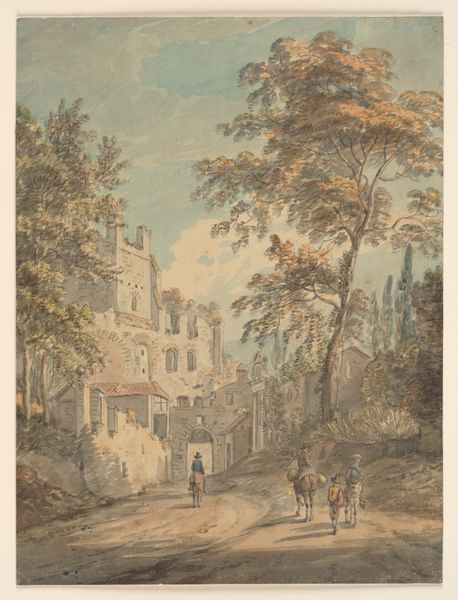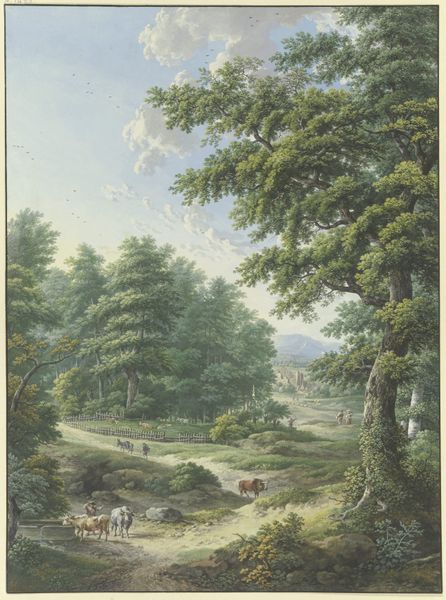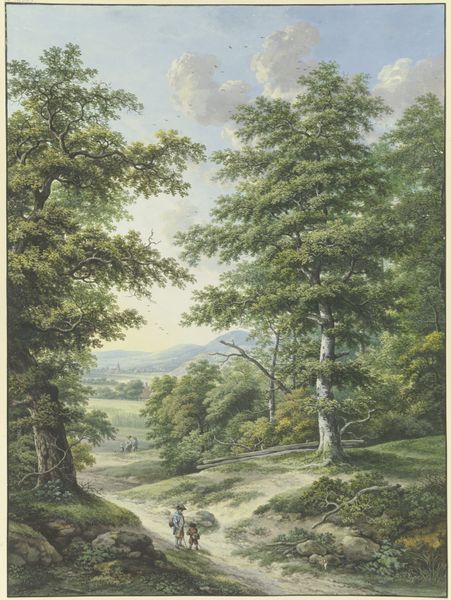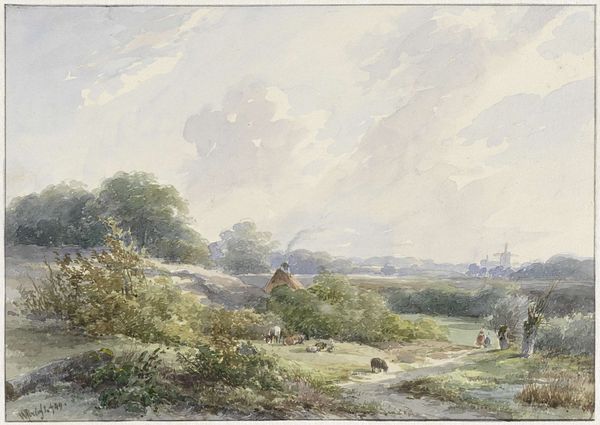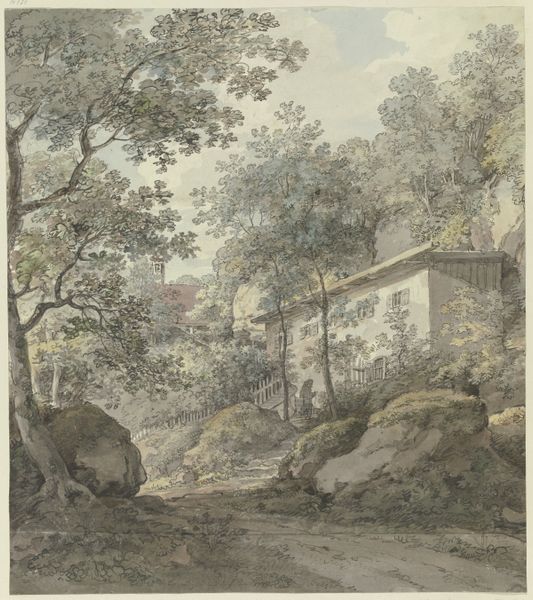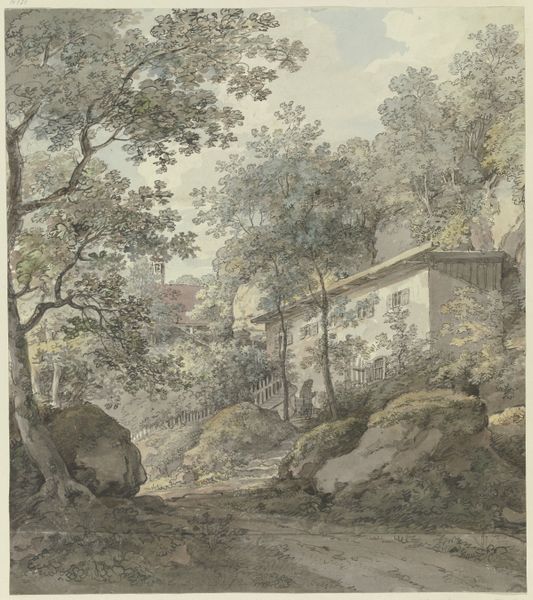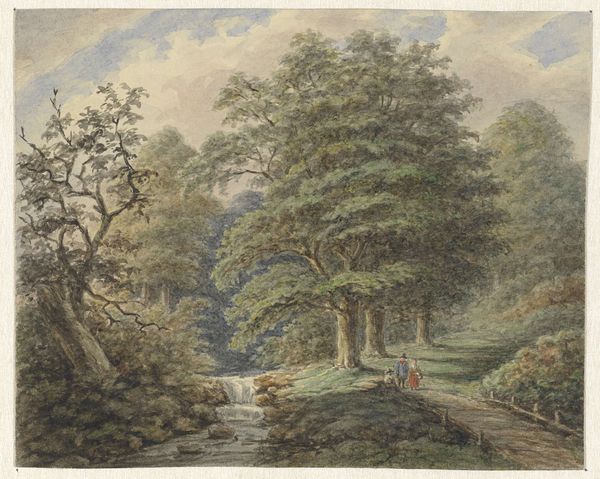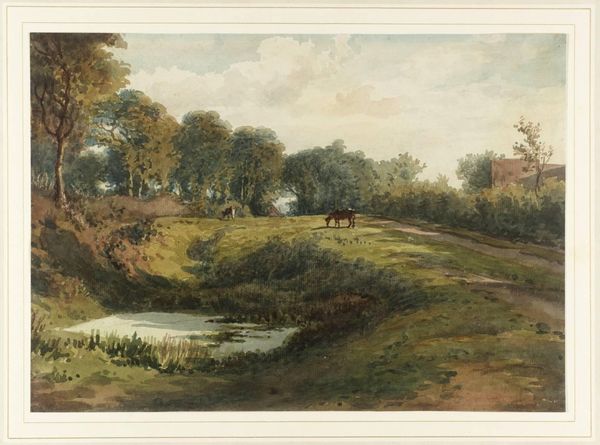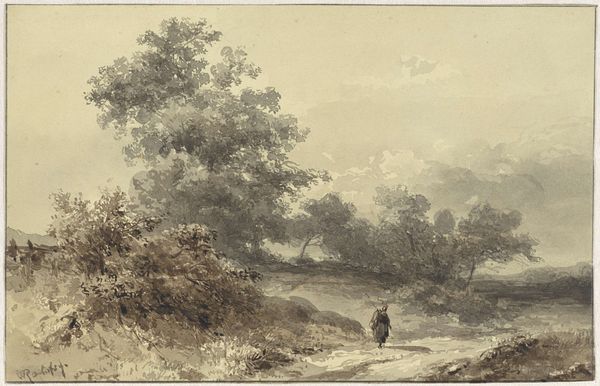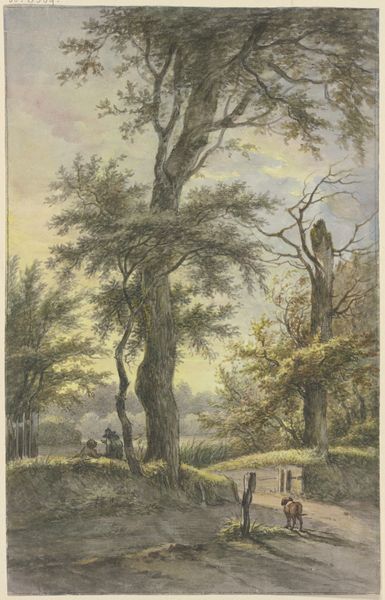
painting, plein-air, watercolor
#
painting
#
impressionism
#
plein-air
#
landscape
#
watercolor
#
coloured pencil
#
watercolor
#
realism
Dimensions: height 361 mm, width 262 mm
Copyright: Rijks Museum: Open Domain
Editor: Here we have Sebastiaan de Ranitz's "Landscape with Two Trees, A City in the Distance," created around 1875 using watercolors. It feels very serene, almost like a memory fading into the past. What stands out to you in terms of its historical context? Curator: It's fascinating to see the rise of landscape painting coincide with increasing urbanization. How do you see this work reflecting the changing social attitudes towards nature and rural life in the late 19th century? Was it a rejection, an idealization, or something more complicated? Editor: That's a good point. Perhaps it was a way of holding on to a disappearing way of life? A subtle protest, maybe? Or a form of escapism for a society rapidly industrializing? Curator: Exactly. Also consider the accessibility of materials at the time. Watercolor paints became more readily available, encouraging artists to work en plein air, capturing fleeting moments directly from nature. Who had access to the means and leisure to create art, and what stories were they choosing to tell? Editor: I see... so even the choice of watercolor contributes to our understanding of its societal place, of where painting took place! And for whom! It makes me wonder how digital landscapes today will be viewed in the future. Curator: Precisely! Reflect on the institutions that valued and preserved such artwork, too. How did private collectors or public museums shape the perception and value of landscapes like this one? Editor: That frames the artwork, the painting, in such a bigger, and more real, context. Thanks so much. Curator: My pleasure. Thinking about how societal shifts shape artistic expression provides invaluable insights.
Comments
No comments
Be the first to comment and join the conversation on the ultimate creative platform.
